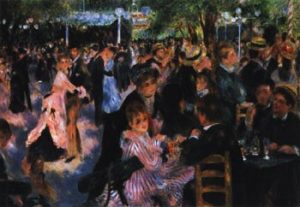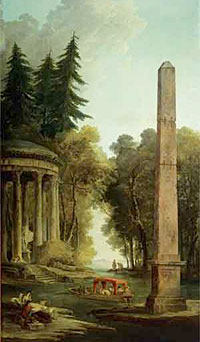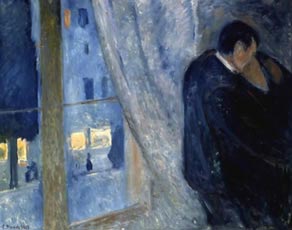Impressionism
 Renoir Pierre Auguste. The Ball in Moulin de la Galette Impressionism (Fr. Impressionisme, from impression – impression) is the artistic style in the art of the last third of the XIX – early XX centuries, which had a great influence on all subsequent art. Impressionism is a purely French phenomenon, although English landscape painters J. Constable and W. Turner are considered its predecessors.
Renoir Pierre Auguste. The Ball in Moulin de la Galette Impressionism (Fr. Impressionisme, from impression – impression) is the artistic style in the art of the last third of the XIX – early XX centuries, which had a great influence on all subsequent art. Impressionism is a purely French phenomenon, although English landscape painters J. Constable and W. Turner are considered its predecessors.
Impressionism originated in France in the 1860s, when E. Manet, O. Renoir, E. Degas introduced into the painting the diversity and complexity of urban life, the freshness and immediacy of world perception. Their works are characterized by the image of random situations, the courage of compositional decisions, the apparent imbalance of composition, unexpected points of view, perspectives.
Representatives of impressionism sought to convey a direct impression of the surrounding world, the changing states of nature by means of painting.
Revolutionary transformations occurred in landscape painting, when artists C. Monet, C. Pissarro, A. Sisley developed a complete plein air system. They came out to paint their paintings in the open air and were able to capture how a simple everyday motif changes in the rays of a glittering sun, the volumetric forms dissolve into vibrations of light and air. The Impressionists sought to portray the visible world in all the richness of sparkling colors, in its inherent constant variability and recreate the unity of man and the surrounding nature.
The works of the Impressionists carry with them a deep philosophical meaning, a special holistic vision of the world. They consider the main thing – the ability to paint a picture in one breath, maintaining the freshness of the first impression, while avoiding detailed viewing.
The Impressionists created a pictorial system, which is distinguished by the decomposition of complex tones into pure colors superimposed on the canvas by separate strokes so that when the viewer perceives the picture from a distance, an optical shift of these colors occurs. All this, as well as colored shadows and reflexes, created a bright, joyful painting. The game of various strokes, pasty and liquid, created a feeling of incompleteness, sketch of the work. Thus, there was a merging of several stages of the artist’s work into a single process, as if replacing a painting with a sketch. In some methods of constructing composition and space in impressionism, the influence of Japanese engraving is noticeable.
For impressionism, there is a tendency to erase clear boundaries between genres, for example, the merging of the everyday genre with a portrait. Impressionism was widely spread in the world of art, but many picked up only a few of its sides appeal to the modern theme, the effects of open-air painting, the lightening of the palette, the sketchiness of painting style, etc.
In Russia, the bright representatives of impressionism were the artists K. Korovin and I. Grabar, who embodied on their canvases extraordinary precision of observation, courage and surprise of compositional decisions. O. Rodin in France and P. Trubetskoy in Russia perceived impressionistic features – seemingly incompleteness, incompleteness, movement caught on the fly, particular trepidation and texture of the surface of bronze and marble.


